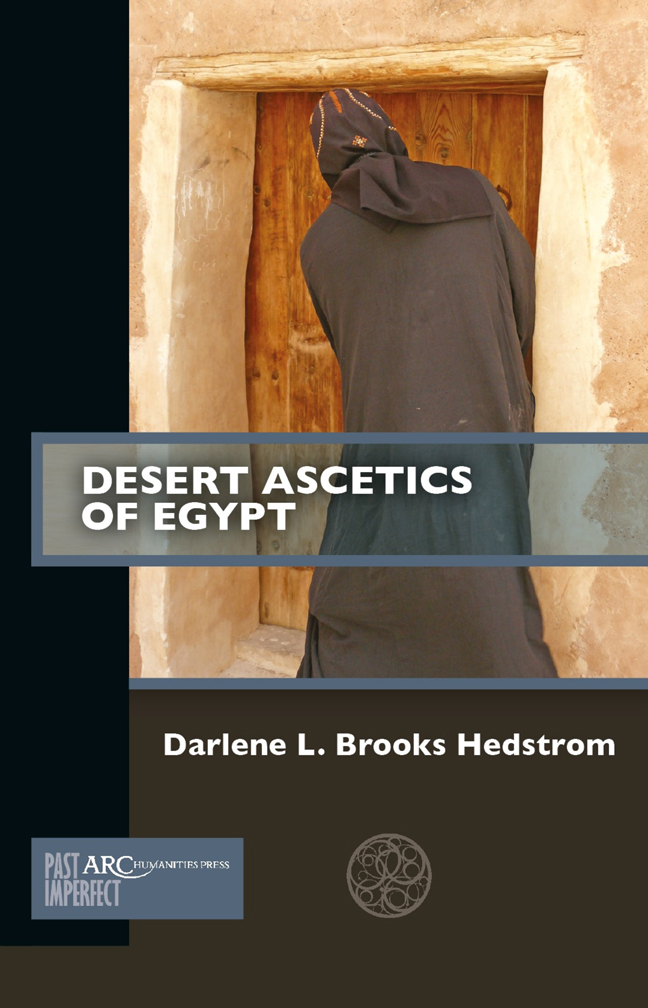Book contents
- Frontmatter
- Contents
- List of Illustrations
- Introduction: Travelling into the Desert
- Chapter 1 Desert Ascetics as Early Christian Celebrities
- Chapter 2 What Did the Desert Ascetics Teach and How Did They Live?
- Chapter 3 Who Was the First Desert Ascetic?
- Chapter 4 Monastic Literature, Letters, and Desert Ascetics
- Chapter 5 Archaeology of Early Egyptian Monasticism
- Chapter 6 Archaeology of Monastic Places
- Chapter 7 Monastic Archaeology and Monastic Things
- Conclusion: Reassembling a History of the Desert Ascetics of Egypt
- Further Reading
Chapter 6 - Archaeology of Monastic Places
Published online by Cambridge University Press: 20 February 2024
- Frontmatter
- Contents
- List of Illustrations
- Introduction: Travelling into the Desert
- Chapter 1 Desert Ascetics as Early Christian Celebrities
- Chapter 2 What Did the Desert Ascetics Teach and How Did They Live?
- Chapter 3 Who Was the First Desert Ascetic?
- Chapter 4 Monastic Literature, Letters, and Desert Ascetics
- Chapter 5 Archaeology of Early Egyptian Monasticism
- Chapter 6 Archaeology of Monastic Places
- Chapter 7 Monastic Archaeology and Monastic Things
- Conclusion: Reassembling a History of the Desert Ascetics of Egypt
- Further Reading
Summary
Monks lived in many places, including houses, naturally forming caves, abandoned buildings, and villages. At other times, monastic communities built their monasteries entirely from the ground up. The Egyptian landscape and available local building materials often played a large role in the design of monastic settlements. The diverse spatial configurations reflected different expressions of monasticism in which the layouts represented the habits and values of specific communities.
Initially, it seems that monks took advantage of aban-doned or seasonal buildings on the edges of property or the outskirts of towns. Fluctuations in property management in Late Antiquity and the inability to enforce evictions may have contributed to available housing that monks could occupy as they moved out of their familial homes. other monks looked to the cliffs of the nearby high desert, where they saw open entrances to pharaonic tombs that could be converted into long-term residences. reusing abandoned tombs, caves, and houses was not a new practice. The process continued into the modern period and was evident most recently in Western thebes, where the town of Gurna was nestled in and among the tombs of the pharaonic past.
This chapter examines the diverse locations where desert ascetics lived and the features that help us differentiate a Christian settlement from a monastic settlement. Only a few monastic sites may be confidently dated by archaeological data to the fourth century. Therefore, the material discussed below illustrates the settlements and communities of monks living in Egypt’s fifth and sixth centuries, when the stories of the Desert Ascetics were first recorded and compiled. As an illustration, the site of Kellia, famously known as the Cells in Latin and Greek monastic literature, is examined in detail as one of the excavated sites of desert asceticism in northern Egypt.
Where Did Monks Live?
The archaeological record indicates that monks adopted a variety of spaces to inhabit. First, monks could occupy unclaimed land or abandoned buildings. Although scholars disagree about the degree of economic change that Egypt experienced in Late Antiquity, there is evidence that the size of towns and villages changed enough that some temples were abandoned or closed, and property disputes rose in an effort to claim unoccupied spaces. Monks appear as landholders in later real estate documents where they were gifted property or portions of houses.
- Type
- Chapter
- Information
- Desert Ascetics of Egypt , pp. 95 - 110Publisher: Amsterdam University PressPrint publication year: 2023

